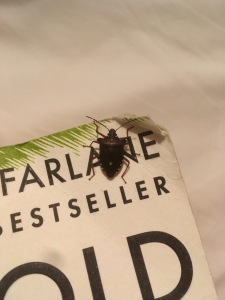It’s been a while since I last posted, but summer travels got in the way of beer making. I spent a few days in Suffolk, where I grew up. While there I went on an early morning run in the sunshine around the local lanes. It was Sunday, it was quiet and the sun was shining as I set off at 0630. I covered 19 miles, training for a marathon, so lots of time to think. Some lanes I knew well and some not so well, even though they were reasonably close to home they were paths less travelled.
I had mixed feelings travelling that route. Some warm rememberances but some sadness at places that had faded: pubs I worked in in my teens now closed; houses where friends had lived now unwelcoming as they have since moved on; and other houses, once proudly maintained, now overgrown and up for auction.
In some ways I am spoilt in Sussex by the natural diversity but the silence of the large Suffolk arable fields, stripped of hedgerows, is a shame. Most notably birdsong but something is missing. That said there were still moments of wonder – there were hares! I love hares but never see them in our corner of Sussex and I don’t know why. On my early morning run one crossed the road in front of me, one sunk down into its form in the field as a I approached and another darted for cover in the yet unharvested wheat. There were also plenty of partridges. Fat hen and mugwort were growing by the roadside, which I find less frequently in Sussex.

Macfarlane’s The Old Ways and a Shield Bug
Macfarlane’s “The Old Ways” (my holiday reading) starts each chapter with an apparently random list of words and phrases, meaningless at the start of the chapter, but looking back they represent shorthand for the story now understood and flow together. This is much like how points on a map join together to make an integrated path when travelled. Similarly a run from disparate place to place becomes one fluid memory and while running the mind has the time to piece together memories with new ideas providing clarity of thought and deeper understanding.
While in Suffolk I was able to visit Little Earth Project brewery. It was great to meet Tom and inspiring to see what he is doing there. I found their approach a very honest and logical way to brew; wherever possible everything was of its place and, to my mind, if you can, why wouldn’t you brew this way. Any other way is just a collection of things from elsewhere brought together and a bit contrived. The brewery has a borehole for water, solar for heating, local renewable coppiced wood for fuel and a thoughtfully constructed building. The barley and hops are grown locally and organically in their own field and wild ingredients are foraged. Tom explained that the name for the brewery had come from a comment made in an interview he heard with Jester King brewery, that they were trying to create something from their little piece of earth. I think they are achieving it at Little Earth Project with a sustainable, self contained, nuclear brewery. As with the book, the map and running, the brewing ingredients and processes come together to form a meaningful beer.
I tasted a few of the beers at the brewery and took a few bottles home. They have a unique complexity of wild flavours. The flavours gave the beers a distinct identity that I doubt could be replicated by another brewery unlike a “clean” beer that could be reproduced anywhere. Some of the beer sampled straight from the barrel, including a porter on plums and a saison in a Chardonnay barrel tasted great, so I look forward to these reaching the shops once bottled. Of the bottled beers drunk so far the Glebe Organic was fantastic and the Elderflower Hedgerow Sour was great too. If I were to splitting hairs, a little more consistency between bottles would refine the product, but I’m really excited to watch, and drink from, this brewery as it progresses.
Back home the buzzard family have fledged and fly together, wheeling weightlessly overhead, free and with effortless grace. I’m noticing more bats but maybe it’s because it’s dusk now when I’m running home. I swear I can hear bats! They sound like a thumb nail being dragged across a comb. The thistles and rosebay willow herb are now downy. Hogsweed and meadowsweet are also now offering up their seed heads. Black knapweed and birdsfoot trefoil flowers are still holding on. Common Fleabane and Watermint are now plentiful and Lady’s Bedstraw is also growing in small patches in some areas. The heather is now beautiful in the woods and it would be fun to recreate an historic ale with it. I Think I identified some wild Angelica in the woods (might have to make some more bathtub gin!).
There’s glut of blackberries. Their evocative scent filled the air as I ran down one narrow path flanked by brambles. I made some fruit leather from them as a new experiment. I followed the River Cottage Hedgerow Handbook recipe. It was beautiful to look at, tasty and so didn’t last long. I also racked a gallon of saison onto 300g of blackberries. A little less fruit than I intended but let’s see.
Watermint is also prolific in the woods at the moment. I would love to use it for something but I’m not sure what beer it would complement. I think I will make a cordial from it and then add to beer at bottling as priming sugar.
More brewing, and blending, next time I promise.











